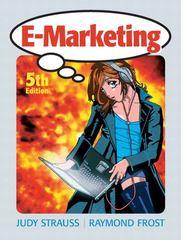
Using the Coca Cola case study above. Do you agree that "step change" rather than incremental change is the best way to transform a business? Your discussion should include the need for Coca Cola to have a clear shared vision in order to manage change effectively and why is it important to identify the resources (capacity for change) that will be required before you proceed to implement change when using the PDCA model.
A case study of the "Coca Cola Corporation" When Asa Griggs Candler founded The Coca Cola Company in the late 1800s, there was no way he knew his company would one day be valued at upwards of $180 billion. That's a lot of money for a business that sells soft drinks. But Coca-Cola didn't become the powerful force it is today by sheer chance. In the 1980s, Coke's biggest rival, Pepsi, was aggressively targeting it. This caused Coca Cola to re-evaluate its offerings. Eventually, the company decided to concoct a new, sweeter soda. They called it simply New Coke. Unfortunately, the public didn't take too kindly to the new beverage. But Coke's executives didn't let the mishap derail their success. Quickly, management decided to pull New Coke and replace it with the older, established formula. Lo and behold, Coca-cola Classic was born, and Coke maintained its market dominance. Just as quickly as Coke changed to accommodate its customers' sweeter palates, it changed direction again when it realized it made the wrong move. But that's not the only instance where Coca-Cola listened to its customers and enacted change. Again, how is a company primarily known for selling sugary drinks valued at $180 billion in 2016? Coke doesn't only sell sweetened carbonated beverages. In fact, the beverage king sells more than 500 brands to customers in over 200 countries. Today, many of its offerings - like DASANI, vitamin water, and Evian - are even considered healthy drinks. In other words, Coca-cola has consistently strived to diversify its product portfolio and expand into new markets. By and large, Coke has succeeded in these efforts. This shows the company's strategy to responding to varying consumer tastes and expectations and changing itself according to it. The coca cola company used theory of organisation change presented by Kotler (1996) which elaborated the procedure to manage change on the people dimension of the organisation. In addition to making operational and strategic changes, the company also changed its advertising strategy by targeting various groups of consumers like American consumers, African consumers, Middle and far eastern consumers and European consumers. The company altered the packaging of its coca cola brand and developed more product lines and broadened them globally (The Coca-Cola company case. n.d.). The present condition of Coca cola Company worldwide is very good. The company is selling its beverages throughout the world successfully. But in some countries, coca cola stores are not successful as according to the company's main marketing, inventory and efficiency theme. The company is planning to align its performance standards according to its own corporate culture and strategies with the help of a comprehensive change management plan. These changes will be implemented within the business operations and management of the company








